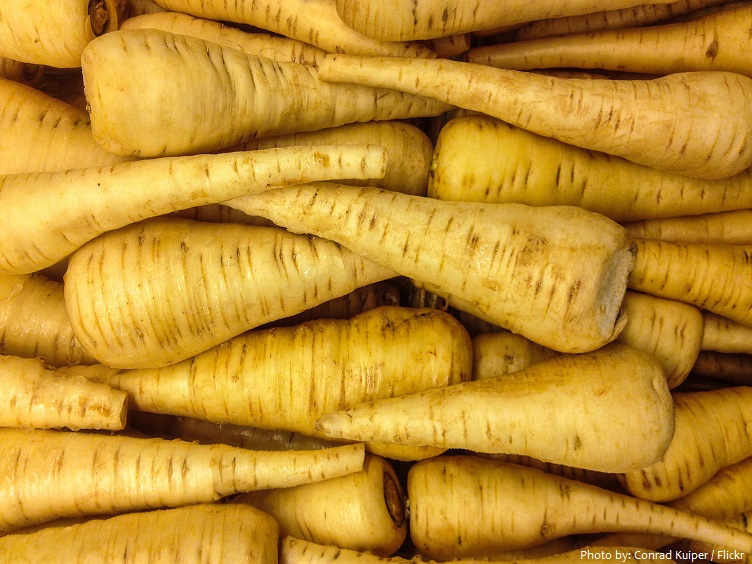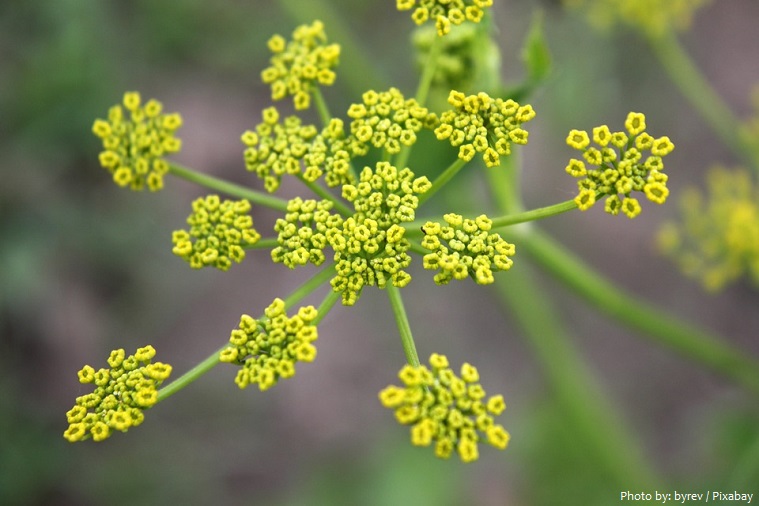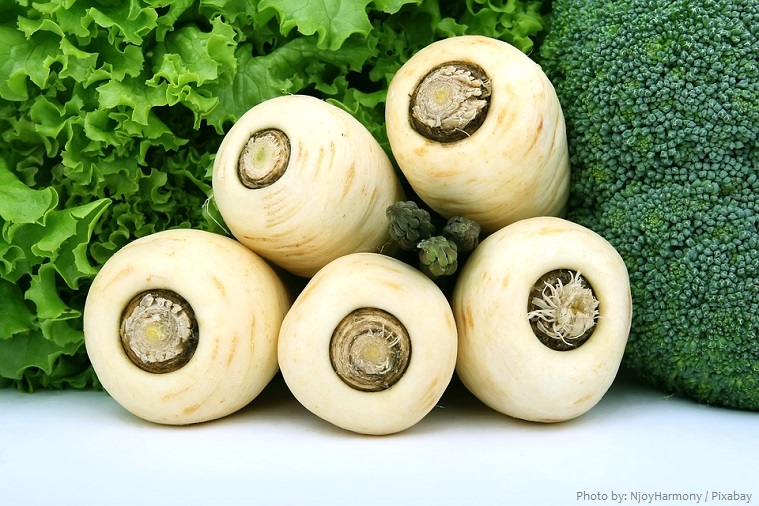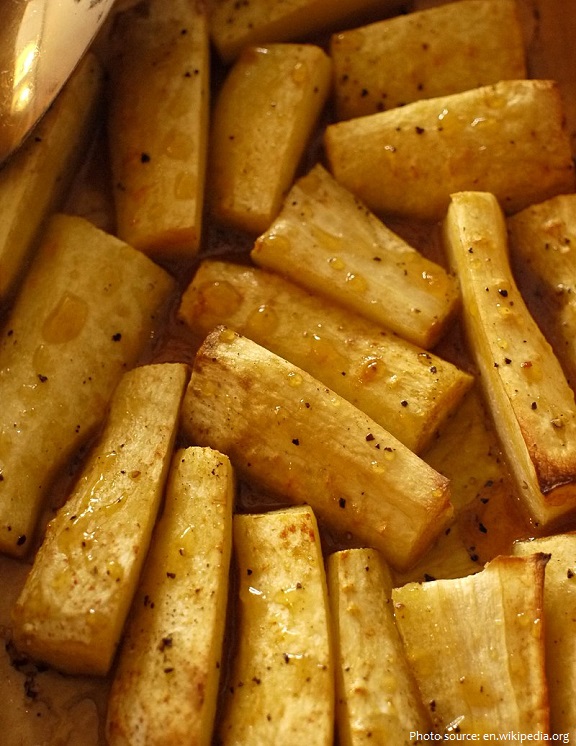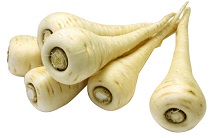The parsnip is a root vegetable closely related to the carrot and parsley.
Parsnips have been cultivated for their sweet roots since ancient times.
Parsnips are native to Europe, but they have been introduced throughout the world, and because they are so hardy, they now grow wild having escaped from cultivated gardens in many areas.
The Romans frequently grew the vegetables. In fact, Emperor Tiberius adored parsnips and, every year, had them brought from France where the colder climate allowed the roots to develop a sweeter flavor.
As a source of both starch and sweetness, parsnips were of supreme importance in the medieval European kitchen.
The British are particularly fond of parsnips. It was British colonists that introduced the vegetable into the New World in 1609.
They were grown in Virginia in 1609 and were common in Massachusetts 20 years later.
Even the American Indians readily took up the growing of parsnips. In 1779 Gen. John Sullivan in his forays against the Iroquois destroyed stores of parsnips grown by these Indians in western New York.
Parsnip seed is sown in the spring, thinly in rows about a half meter apart, and the plants are thinned to stand 5 to 7 cm (2 to 3 inches) apart in the row.
It is an biennial plant that is strongly-scented and grows to over 1.5 meters (59 inches) in height.
The single green stem is 2 to 5 centimeters (0.8 to 2 inches) thick and smooth with few hairs.
Compound leaves are arranged in pairs, with sharply toothed leaflets that are shaped like a mitten.
Yellowish green flowers form umbrella-shaped clusters 10 to 20 centimeters across.
The edible taproot is fleshy, long (can be over 80 centimeters (31.5 inches) at times), and white.
There are 75 calories in 100 grams (3.5 ounces) of parsnips.
Parsnips contain a wide variety of vitamins, minerals and nutrients, including dietary fiber, potassium, calcium, iron, magnesium, manganese, phosphorus, sodium and zinc several of the B-group vitamins, vitamin C, Vitamin E and vitamin K.
Since most of the vitamins and minerals are found close to the skin, many will be lost unless the root is finely peeled or cooked whole.
The health benefits of parsnips include improve heart health, boost the immune system, promote brain health, skin health and oral health, improve vision, prevent diabetes, supporting digestion and aid in weight loss.
Parsnip is sweet in flavor and is usually served as a cooked vegetable.
It can be baked, boiled, pureed, roasted, fried, grilled, or steamed.
Famous chefs reveal that parsnip is easy to prepared for diverse roles when brought to the table as an appetizer, soup, salad, or side dish.
When used in stews, soups, and casseroles, they give a rich flavor.
Roast parsnip is considered an essential part of Christmas dinner in some parts of the English-speaking world and frequently features in the traditional Sunday roast.
Parsnips can also be fried or thinly sliced and made into crisps.
The word “parsnip” was borrowed into Middle English in the 14th century as a modification of the Old French word pasnaie, itself derived from the Latin noun pastinaca, meaning “parsnip” or “carrot.” The scientific name for the parsnip, “Pastinaca sativa,” still reflects this history. “Pastinaca,” in turn, traces back to “pastinum,” a Latin word for a small gardening tool used to make holes in the ground for the insertion of plants, seeds, or bulbs. “Parsnip” may also remind you of the name of another edible root, “turnip,” and there’s a possible explanation for the resemblance. The Middle English spelling of “parsnip” (“passenep”) may have been influenced by “nepe,” the old form of “turnip.”
In Europe, the vegetable was used as a source of sugar before cane and beet sugars were available.
In 1859, a new cultivar called ‘Student’ was developed by James Buckman at the Royal Agricultural College in England. He back-crossed cultivated plants to wild stock, aiming to demonstrate how native plants could be improved by selective breeding. This experiment was so successful, ‘Student’ became the major variety in cultivation in the late 19th century.


